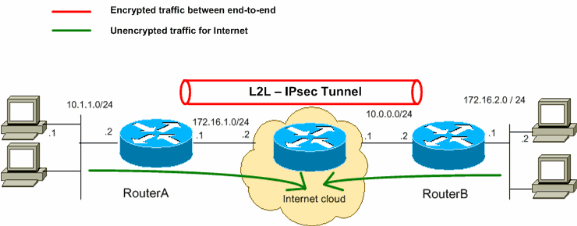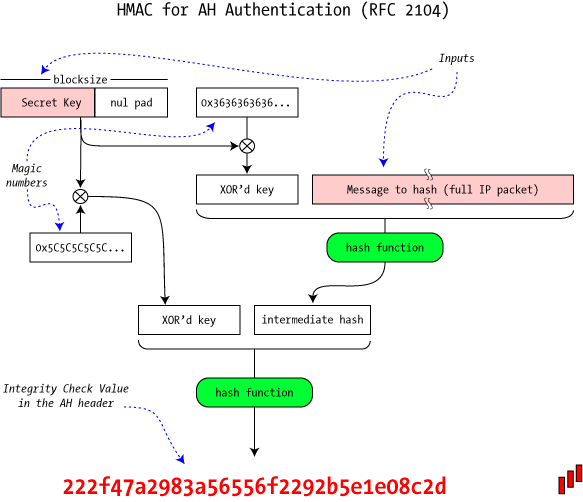Featured
Table of Contents
What Is Ipsec? - Blog - Privadovpn
IPsec validates and secures information packages sent over both IPv4- and IPv6-based networks. IPsec procedure headers are found in the IP header of a package and define how the information in a packet is managed, including its routing and shipment across a network. IPsec adds numerous parts to the IP header, consisting of security details and several cryptographic algorithms.

ISAKMP is specified as part of the IKE protocol and RFC 7296. It is a framework for essential facility, authentication and negotiation of an SA for a safe exchange of packets at the IP layer. Simply put, ISAKMP defines the security specifications for how two systems, or hosts, interact with each other.
They are as follows: The IPsec process starts when a host system recognizes that a package needs security and must be transferred using IPsec policies. Such packages are thought about "intriguing traffic" for IPsec functions, and they activate the security policies. For outgoing packages, this means the suitable encryption and authentication are used.
Site To Site Ipsec Vpn Phase-1 And Phase-2 Troubleshooting ...
In the second step, the hosts use IPsec to negotiate the set of policies they will utilize for a protected circuit. They also confirm themselves to each other and established a safe channel between them that is utilized to work out the method the IPsec circuit will secure or verify data sent throughout it.

After termination, the hosts get rid of the personal secrets used throughout information transmission. A VPN basically is a personal network carried out over a public network. Anyone who connects to the VPN can access this personal network as if directly linked to it. VPNs are typically used in companies to allow staff members to access their business network remotely.
Usually used in between safe network entrances, IPsec tunnel mode enables hosts behind one of the gateways to interact safely with hosts behind the other gateway. For instance, any users of systems in an enterprise branch office can securely link with any systems in the main office if the branch office and main workplace have protected entrances to act as IPsec proxies for hosts within the particular offices.
Ipsec Vpn Explained - How Ipsec Works - Ipsec Vs Ssl
IPsec transportation mode is used in cases where one host requires to connect with another host. The 2 hosts negotiate the IPsec circuit straight with each other, and the circuit is generally torn down after the session is complete.
With an IPsec VPN, IP packets are secured as they take a trip to and from the IPsec entrance at the edge of a personal network and remote hosts and networks. An SSL VPN safeguards traffic as it moves between remote users and an SSL gateway. IPsec VPNs support all IP-based applications, while SSL VPNs only support browser-based applications, though they can support other applications with customized advancement.
See what is finest for your company and where one type works best over the other.
Ipsec
Lastly, each IPsec endpoint validates the identity of the other endpoint it desires to interact with, guaranteeing that network traffic and information are only sent to the intended and permitted endpoint. In spite of its fantastic energy, IPsec has a couple of problems worth mentioning. Initially, direct end-to-end interaction (i. e., transmission method) is not always available.
The adoption of numerous regional security policies in large-scale dispersed systems or inter-domain settings might position severe concerns for end-to-end communication. In this example, presume that FW1 needs to check traffic content to identify invasions and that a policy is set at FW1 to deny all encrypted traffic so as to impose its content assessment requirements.
Users who utilize VPNs to from another location access a private business network are placed on the network itself, giving them the very same rights and operational capabilities as a user who is connecting from within that network. An IPsec-based VPN might be produced in a variety of methods, depending upon the requirements of the user.
Ipsec Vpn: What It Is And How It Works
Because these parts might originate from numerous suppliers, interoperability is a must. IPsec VPNs enable smooth access to business network resources, and users do not necessarily need to utilize web gain access to (gain access to can be non-web); it is for that reason an option for applications that require to automate interaction in both methods.
Its structure can support today's cryptographic algorithms along with more effective algorithms as they appear in the future. IPsec is a necessary part of Web Protocol Version 6 (IPv6), which companies are actively deploying within their networks, and is strongly advised for Web Protocol Version 4 (IPv4) applications.
It supplies a transparent end-to-end protected channel for upper-layer protocols, and executions do not require modifications to those procedures or to applications. While possessing some downsides related to its intricacy, it is a mature protocol suite that supports a variety of encryption and hashing algorithms and is extremely scalable and interoperable.
1. Define Ipsec? 2. What Ipsec Used For? 3. What Are The ...
Like VPNs, there are lots of ways an Absolutely no Trust design can be carried out, however services like Twingate make the procedure significantly easier than having to wrangle an IPsec VPN. Contact Twingate today to find out more.

IPsec isn't the most typical internet security protocol you'll utilize today, but it still has an essential function to play in securing web interactions. If you're using IPsec today, it's probably in the context of a virtual private network, or VPN. As its name implies, a VPN develops a network connection in between two makers over the general public web that's as safe and secure (or almost as safe and secure) as a connection within a private internal network: probably a VPN's many widely known use case is to allow remote workers to access protected files behind a corporate firewall program as if they were operating in the office.
For many of this post, when we state VPN, we indicate an IPsec VPN, and over the next a number of areas, we'll describe how they work. A note on: If you're aiming to establish your firewall software to permit an IPsec VPN connection, make sure to open UDP port 500 and IP ports 50 and 51.
What Is Ipsec? - How Ipsec Work And Protocols Used

When this has actually all been set, the transportation layer hands off the data to the network layer, which is mainly controlled by code running on the routers and other elements that comprise a network. These routers decide on the route specific network packets take to their location, however the transportation layer code at either end of the communication chain does not need to understand those information.
By itself, IP does not have any integrated security, which, as we noted, is why IPsec was developed. However IPsec was followed carefully by SSL/TLS TLS means transport layer security, and it includes securing interaction at that layer. Today, TLS is built into virtually all browsers and other internet-connected applications, and is more than adequate defense for daily internet usage.
That's why an IPsec VPN can add another layer of security: it includes securing the packages themselves. An IPsec VPN connection starts with facility of a Security Association (SA) between two communicating computer systems, or hosts. In general, this involves the exchange of cryptographic secrets that will permit the parties to encrypt and decrypt their interaction.
Latest Posts
Best Vpns For Freelancers And Remote Workers: Protect ...
18 Best Vpn Services To Protect Your Online Privacy + ...
16 Best Vpn For Android & Ios In 2022 [Free & Paid]